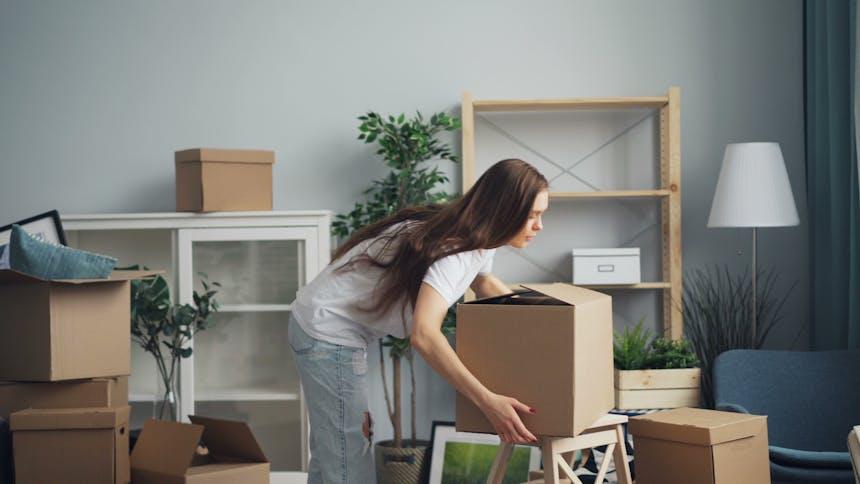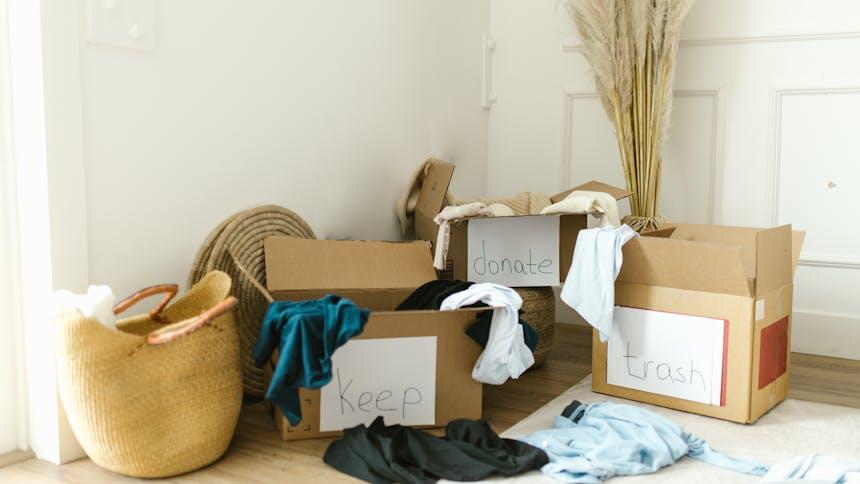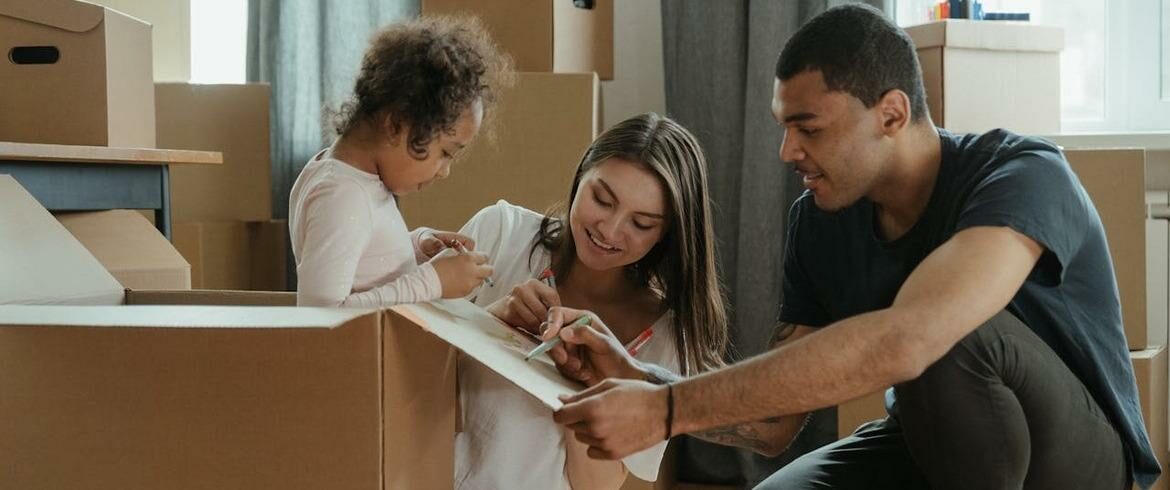Moving into a new home is an exciting experience, but it often comes with a hidden challenge: the eco-slump of convenience living. After a move, it’s easy to fall into the trap of relying on disposable items, take-out food, and quick, energy-intensive solutions. These habits may seem convenient, but they can significantly impact the environment. The good news is that with a few simple changes, you can avoid the eco-slump of convenience living and create a more sustainable home right from the start.
The Drawbacks of Convenience Living
After a move, it’s tempting to turn to convenience living. Quick fixes like take-out meals, disposable products, and using energy-hungry appliances can make life easier in the short term. However, these choices have significant drawbacks for the environment and your long-term sustainability goals.
- Increased waste: Single-use plastics and packaging pile up quickly.
- Higher energy consumption: Over-reliance on power-hungry devices can increase utility bills.
- Food waste: Ordering takeout often leads to larger portions and unnecessary waste.
- Increased carbon footprint: Relying on delivery services and packaged goods produces more emissions.
While convenience can make daily life simpler, it often compromises the planet and personal eco-efforts. Avoiding these habits early on can help you reduce your daily carbon footprint and stay committed to sustainable living.

Start with Sustainable Packing and Unpacking
Starting your move with sustainable packing and unpacking can set the tone for a greener lifestyle in your new home. Instead of relying on cardboard boxes and plastic wrap, opt for reusable containers, cloth bags, or even old newspapers to protect your belongings. If you have excess items, consider donating, selling, or recycling rather than throwing them away. Once you arrive at your new place, use eco-friendly cleaning products to refresh the space.
Making these small, sustainable choices early on helps you avoid the eco-slump of convenience living and create an environmentally conscious foundation for your home. These efforts reduce waste and promote a more mindful approach to your new living environment.
Set Up an Energy-Saving System Right Away
Setting up an energy-saving system in your new home right away can significantly impact your bills and the environment. Start by replacing traditional light bulbs with energy-efficient LED bulbs and unplugging electronics when not in use. Check your home’s insulation and consider using a programmable thermostat to manage heating and cooling more efficiently. You might also want to invest in energy-efficient appliances to reduce long-term energy consumption.
Additionally, consider your water consumption by installing low-flow faucets and showerheads, which can save both water and energy. Small changes like these will help you create a sustainable living space, ensuring that your new home is both energy-efficient and eco-friendly.

Choose Eco-Friendly Groceries and Meal Planning
When settling into your new home, choosing eco-friendly groceries and planning meals that minimize waste is important. Sustainable grocery shopping can reduce your environmental impact and help you stay on track with your eco-friendly goals. Consider these simple strategies:
- Buy in bulk: Reduce packaging waste by purchasing grains, beans, and snacks in bulk.
- Choose locally grown produce: Support local farmers and lower your carbon footprint by buying seasonal, local items.
- Opt for reusable bags: Avoid plastic bags by bringing your reusable shopping bags.
- Plan meals: Minimize food waste by creating a weekly meal plan and using leftovers.
Avoid Fast-Food Habits by Cooking at Home
After a move, it’s easy to fall into the habit of relying on fast food for convenience. However, this often leads to excessive packaging waste and higher carbon emissions. Cooking at home can save money, reduce waste, and be much healthier.
You don’t need elaborate meals—simple recipes like stir-fries, soups, or salads can be quick and nutritious. Invest in reusable containers for leftovers and meal prep to make cooking even easier. Avoiding fast-food habits ensures you avoid the eco-slump of convenience living and contribute to a more sustainable lifestyle in your new home.
Recycle and Reduce Waste Right from the Start
Setting up an efficient recycling system in your new home is essential for reducing waste immediately. Begin by sorting recyclables, composting organic waste, and setting aside trash for proper disposal. Separate paper, plastic, and glass to keep your recycling efforts effective.
Invest in reusable items, like cloth napkins and shopping bags, to reduce waste. Being mindful of your consumption and waste enables you to take an important step toward a zero-waste lifestyle. These simple actions will help you create a more sustainable home environment.

Create a Green Space in Your New Home
Creating a green space in your new home can improve your environment and well-being. Start by adding indoor plants that purify the air and create a calming atmosphere. Popular options like snake plants, peace lilies, and succulents are low-maintenance and perfect for beginners.
Consider setting up a small herb garden on your windowsill. This can help reduce food waste by providing fresh ingredients. A green space adds beauty to your home and can lower energy costs by improving insulation.
Embrace Minimalism and Declutter to Stay Green
Embracing minimalism and decluttering your home can help you stay green by reducing waste and preventing unnecessary purchases. Moving into a new home is the perfect opportunity to evaluate your belongings and remove items you no longer need. The less you accumulate, the less you have to manage, and the fewer resources you consume. Consider these tips to embrace minimalism:
- Donate or sell unused items: Find new homes for things you don’t need.
- Opt for quality over quantity: Invest in durable items that will last longer.
- Organize with purpose: Keep what adds value to your life or home.
- Avoid impulse buying: Think twice before acquiring new items you don’t truly need.
Stay Committed to a Sustainable Lifestyle Post-Move
Avoiding the eco-slump of convenience living may seem challenging after a move. However, it is entirely possible with a few mindful steps. By setting up energy-saving systems, choosing sustainable groceries, and embracing minimalism, you can create an eco-friendly and comfortable home. Stay committed to these changes; you’ll improve your living space and contribute positively to the environment.

Author bio: Jack Abercrombie is a sustainability advocate and consultant at Collegian Movers, where he helps people transition to greener living spaces. Passionate about eco-friendly practices, he shares practical tips for maintaining a sustainable lifestyle, especially during and after a move.




